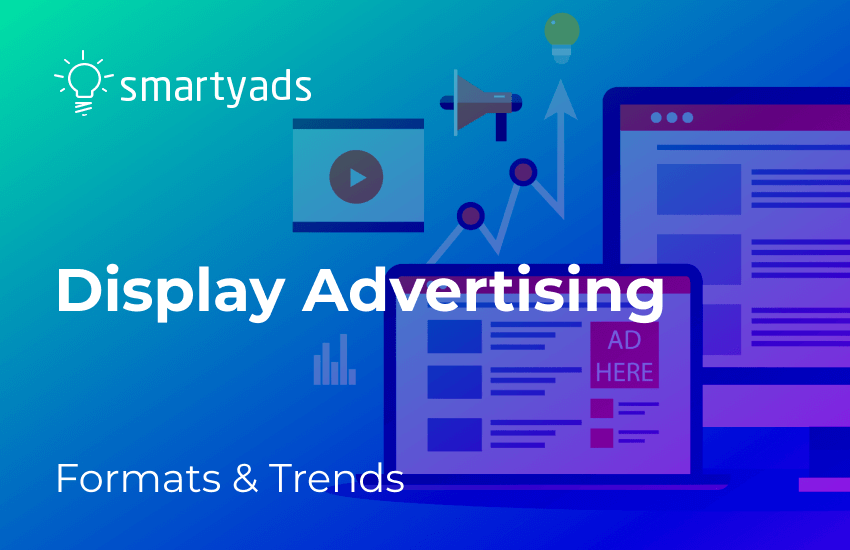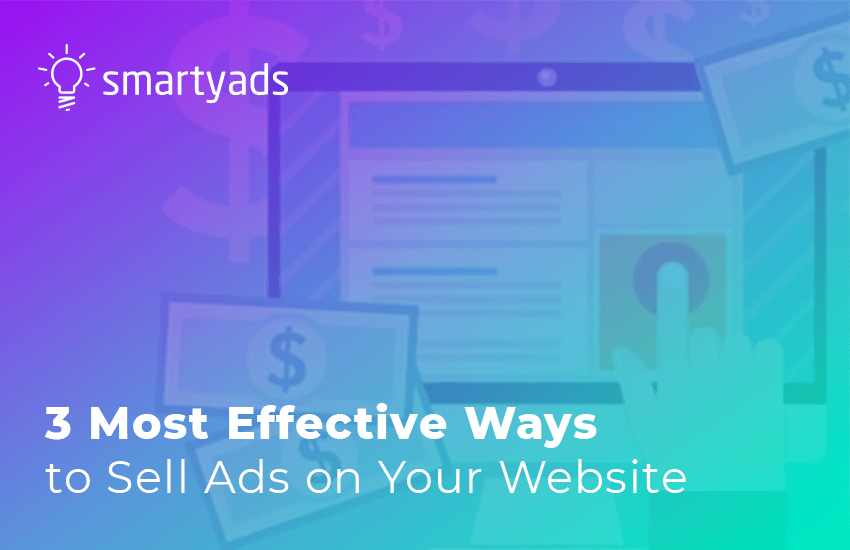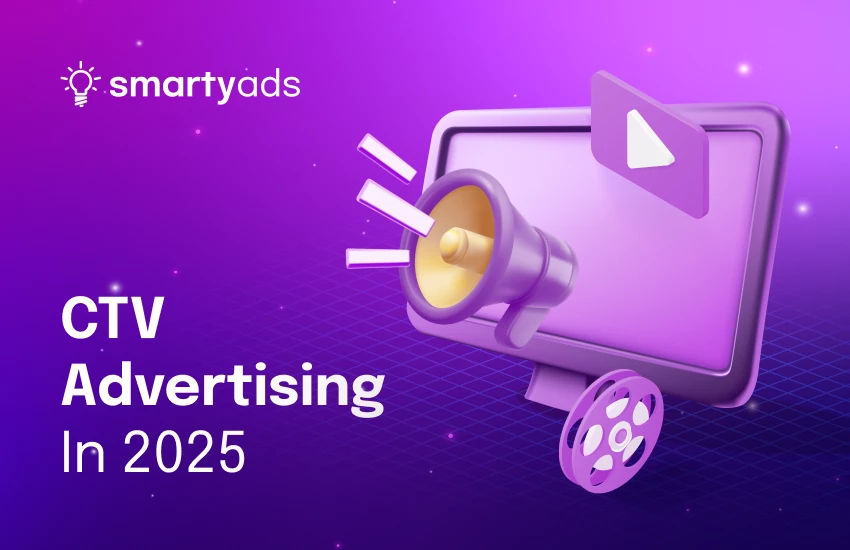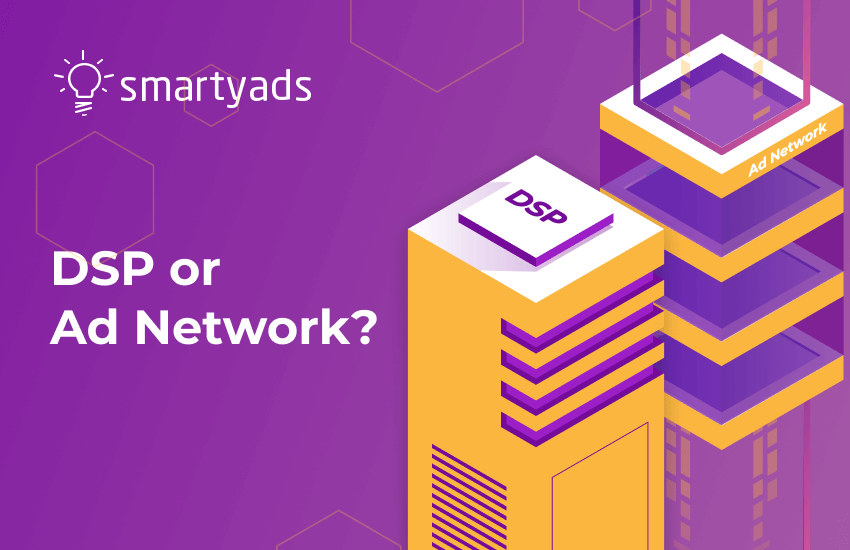Digital marketing has advanced at a breakneck pace. One of the latest evolutions in digital marketing is the rapid propagation of display advertorials. Digital marketers and advertisers now know a lot about programmatic advertising; they understand the benefits of programmatic display advertising and how to combine it with traditional. However, only about 20% of internet users can answer the question: what is a display unit?
Even if you define digital display advertising right, it doesn't mean your display campaigns will run smoothly. Effective use of programmatic display ads can help to ease some of the challenges of programmatic display advertising. But it also takes a lot of skill to combine display advertorials and programmatic advertising. Let's look at how programmatic display advertising works and how to improve its efficiency in the digital marketing space.

What is display advertising: distinctive features
A display ad is a form of paid advertising that usually features a clickable image and a compelling copy written over it. Modern display units can be distributed via lots of channels, including television and radio. However, the most popular way to distribute ads is via digital interactive channels - mobile, desktop, in-app ecosystems, and connected TV advertising.
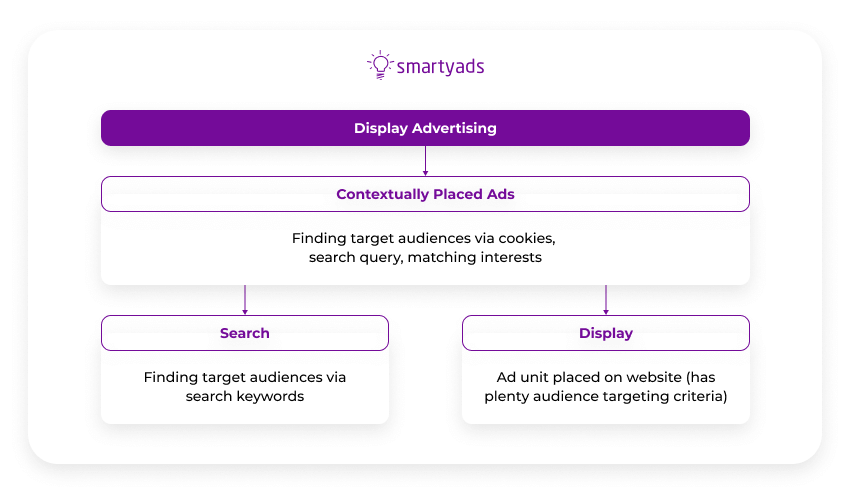
The Google display network also enables advertisers who wish to make good ROI on their digital marketing efforts to launch Google ads that utilize different targeting criteria, (based on cookies). Same with programmatic and display ads.
Such Google ads are placed on websites automatically and in real time. They utilize programmatic advertising algorithms (machine learning functionalities) to determine which user should see the ad and which impression could be relevant.
Programmatic technology is used by advertising networks to determine the value of each particular impression for the end-user (based on search history, browsed sites, interests, etc). Programmatic advertising comes to replace manual ad placement techniques, which are largely inefficient and time-consuming. Instead of manual placing, programmatic uses real time bidding. Several companies use programmatic ads for their display units and Google is one of them.
Google ads, for instance, are personalized for each user. Programmatic display technology is also used by multiple ad exchanges, ad networks, and DSPs. These platforms function according to programmatic advertising algorithms. Each time the landing page is browsed, the user sees the ad that is specific to them based on targeting criteria. See the example of Google search ads below.
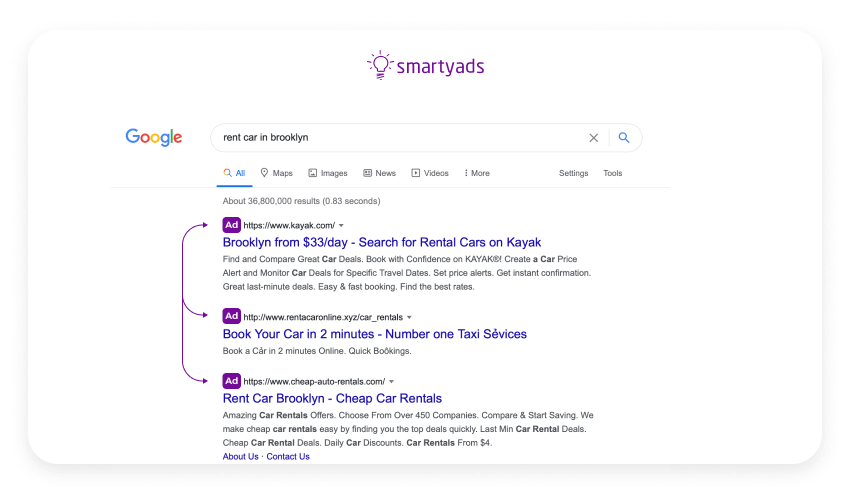
Display ads can be placed contextually (contextual targeting), meaning that the thematics of advertised products or services will fit the thematics of the site or app on which they are displayed. Search phrases, cookie information, site browsing behavior tracking, and other advertising programmatic mechanisms enable advertisers to target the right audience online.
Utilize the Google display network to create search ads that appear in the search engine (at the top of the landing page) when a user performs a search. This can be accomplished by employing programmatic advertising algorithms that leverage contextual targeting for search ads.
At SmartyAds, we deploy programmatic advertising algorithms in serving targeted ads with our large network of publishers. Deploying programmatic advertising technology helps us to serve the most suited ads so that any brand could effectively target its audience.
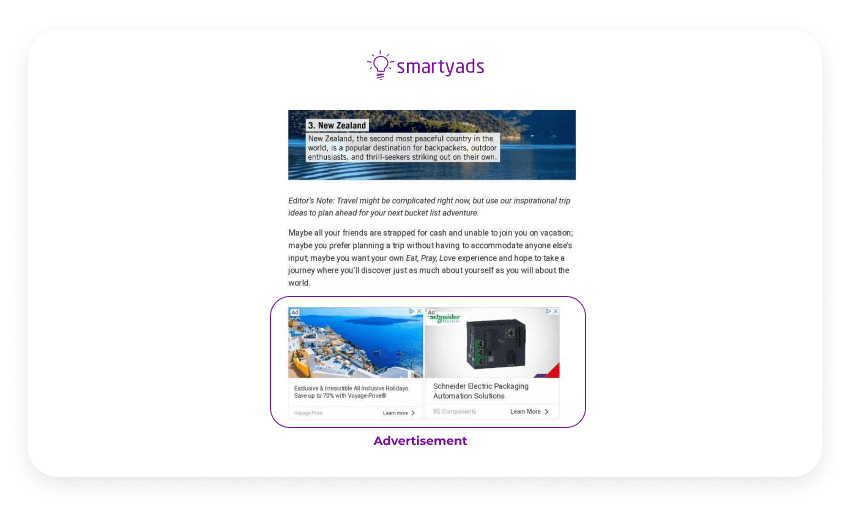
What are the distinctive features of display advertising?
Display advertising can be used to reach audience as part of a digital marketing strategy. Using AI-enhanced and machine learning solutions, ad serving can be tailored to specific sites, regions, times, and other parameters. It is also possible to use programmatic advertising techniques and programmatic display advertising platforms. This way, the ad unit is shown only to interested users based on their data characteristics (which is way more precise than contextual targeting).
Display adverts are typically used for branding campaigns (in programmatic advertising) but they can also accomplish a lot of other tasks aside from raising brand awareness - increasing brand recall, generating sales, etc. Read further to get started with best practices for display ads.
What is the purpose of display advertising?
Digital marketing is a goal-oriented endeavor. In the world of display advertising, the micro goal of display advertising is to draw the attention of the target audience and encourage them to click on programmatic and display ads.
The macro goal of display advertising is to raise brand awareness and boost sales in the long term. Both goals work for programmatic display advertising and manual display advertising. Also, both approaches have been greatly deployed today by ad exchanges and publishers to bring advertisers the best ROI on their budget.
There are many types of display advertorials, each of which can be good for a particular purpose in programmatic advertising. Almost every internet user knows what a regular display ads look like. Here are some of the best display advertising examples and info about ad buying.
What are the distinctive features of display advertising?
Such advertising is typically focused on the target audience, the ad serving can be adjusted according to the theme of the sites, regions, time, and other parameters. The ad unit is shown only to interested users, based on their data characteristics. Display ads are typically used for branding campaigns but they can also accomplish a lot of other tasks aside from raising awareness - increasing brand recall, generating sales, etc.
What is the purpose of display advertising?
The micro goal is to make the target audience click on the ad. The macro goal is to raise brand awareness and boost sales in the long term. There are many types of display units each of which can be good for a particular purpose. But how do they look? In fact, almost every internet user knows what a regular display unit looks like. Here are some of the best display advertising examples:
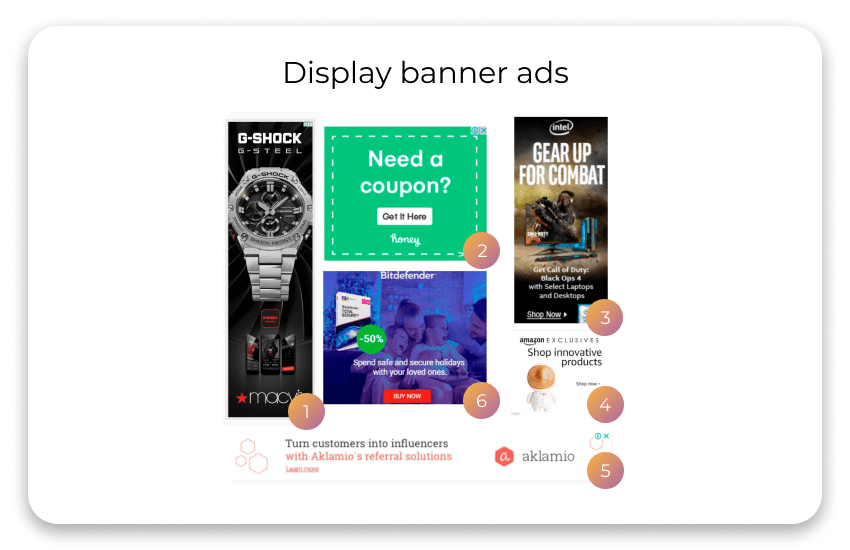
The images above belong to display banner ads launched on a typical display network. Ad #1 is a skyscraper banner ad, ads #2 and #6 are large rectangle banners, #4 is a medium rectangle, #3 is a vertical rectangle, and the display advertisement unit #5 belongs to the class of leaderboard banners. All those formats account for 77% of all impressions and are the most widespread display banner ads across the web. Learn more about the most popular display formats and sizes in this article. Display advertising including programmatic display advertising is not limited to banners. It also includes the following:
Types of display adverts to look for and use
In-banner video and animation display adverts appear on the page the same way as banners do. This is one of the most frequent ad sizes because of its economy of ad space.
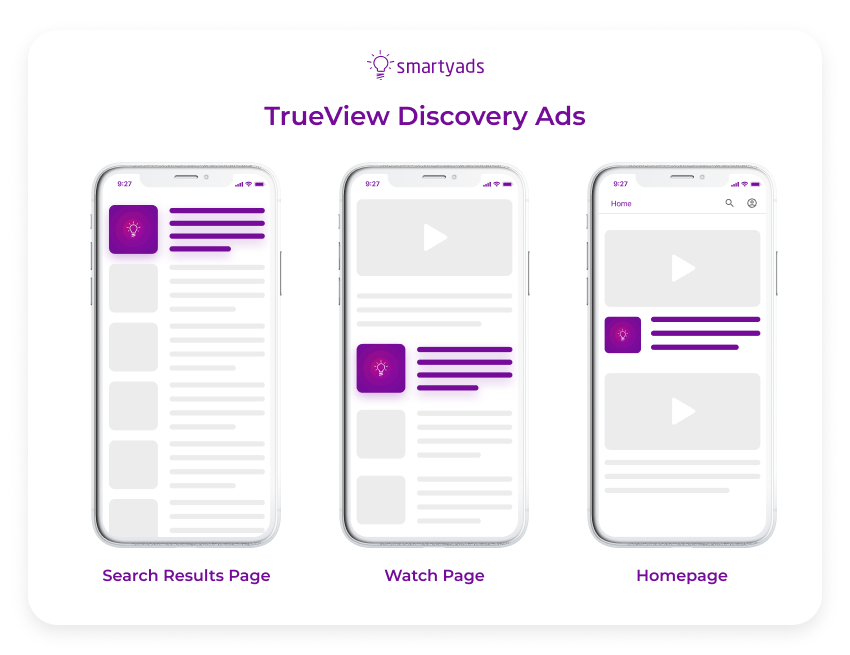
Rich media ads that expand twice in size are triggered by the user. According to our research, rich media are 25% more memorable than regular banners and take up less ad space.
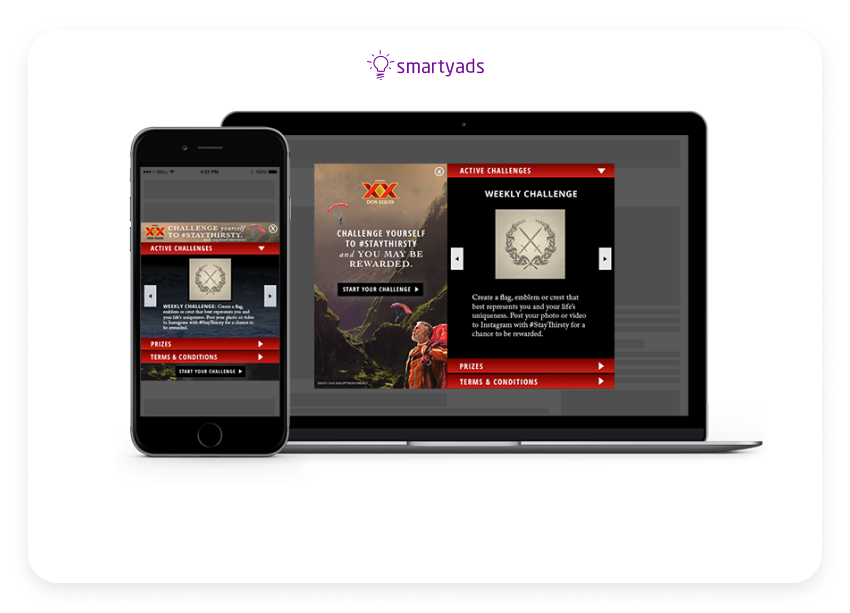
Video ads. Interstitial ads represent a full-screen form of advertising with ad units that are shown atop the web content of landing pages. Interstitial video ads, however, take up a lot of ad space compared to In-banner video.
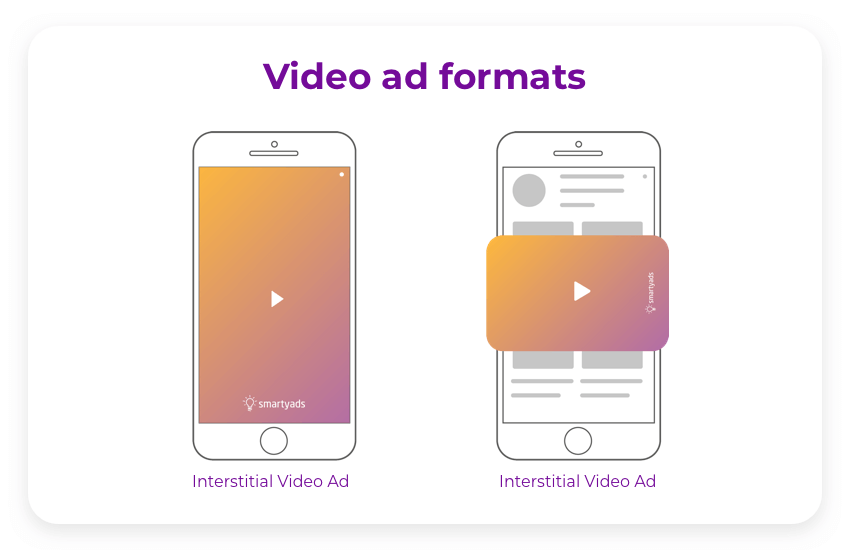
Native ads. Those ad units adjust to the website’s content by mimicking the design and functions of website elements. Plus, these ad types take the form of useful articles. which also promotes service or product in a more subtle way.
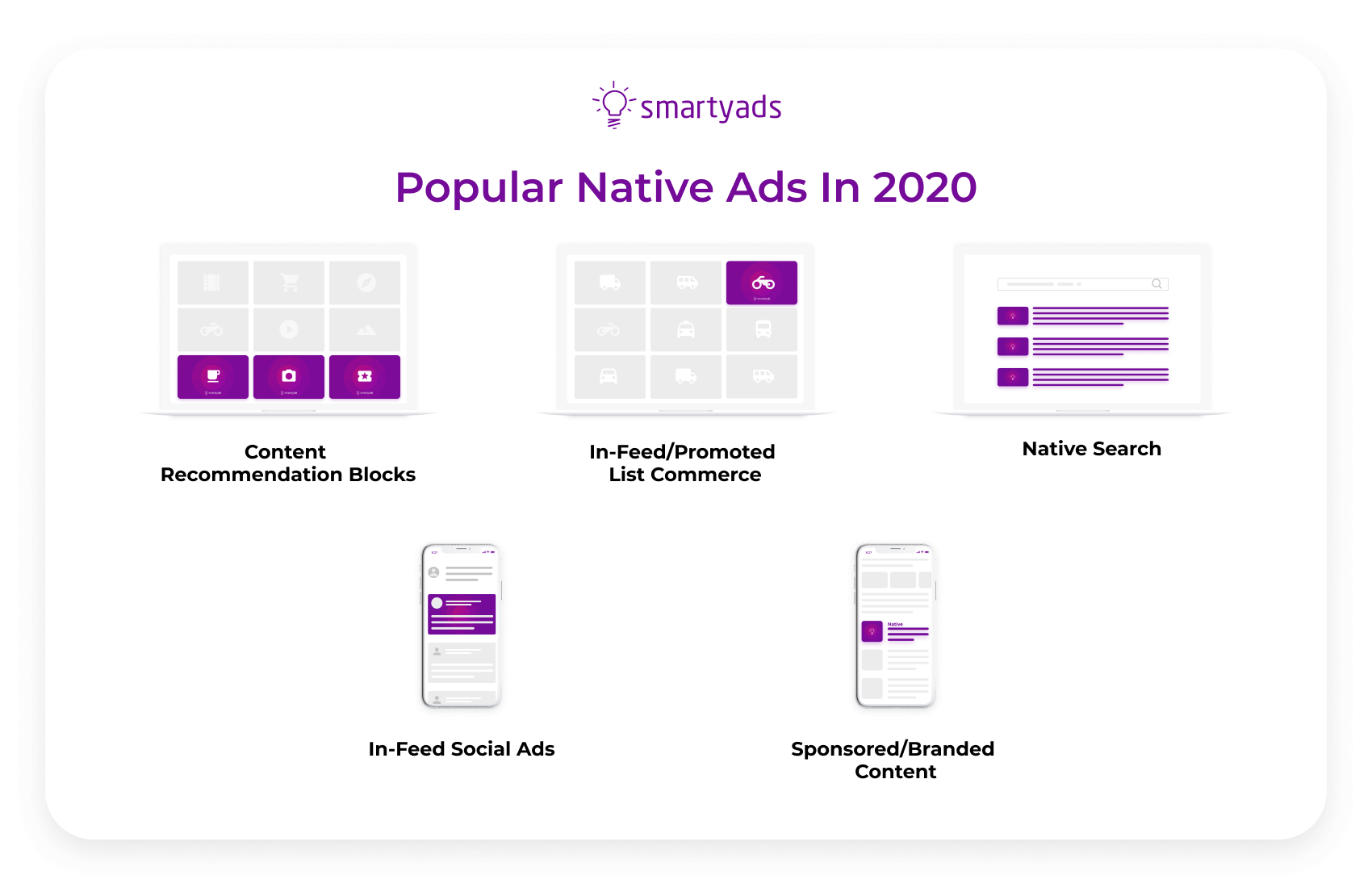
Yes, native advertising is also considered a part of programmatic display advertising. For example, eMarketer reported that native adverts make up 58.3% of display spending and programmatic advertising. In most cases, these kinds of ads also manage to bypass ad blockers. They usually don’t appear as banners, but rather as recommended content, and are mostly programmatic ads.
What display campaigns are good for
Though it could be safe to say that display campaigns are universal, normally they are used for branding campaigns rather than performance advertising. The main purpose of display adverts is to capture attention and cause a brand recall while forming a strong brand image in the customer’s mind.
So, what display campaigns are good for:
- Driving better recognition and brand awareness, however, is not a single superpower that display advertising campaigns can give to advertisers or marketers.
- You can engage the customers to check what’s new in stock or promote a new product.
- You can increase the traffic to the particular landing page
- You can deliver important news/updates about your shop
- You can find new audiences addressing customers via different channels (let’s say CTV) and in real time.
How do display ads work?
A display unit is a clickable image with a copy on it.
There are 3 ways of buying ad inventory or advertising space: contact publishers directly, join an ad network/ad exchange - which is to buy programmatic inventory.
To meet the advertiser’s needs, an ad network or ad exchange uses a set of advertising techniques including using programmatic advertising algorithms to tailor the user's browsing needs or potential interests to the advertisers' targeting options.
When a programmatic advertising ad is served to the target audience, an advertiser analyzes results to determine whether this programmatic display advertising campaign performs well or not.
Key metrics to consider while you buy ad space are:
- Page Views or Impressions — the number of times the ad was shown to its target audience. Primarily depends on the publisher’s website authority.
- Click-through Rate (CTR) — the ratio of page views to clicks. This metric depends more on ad quality and inventory (ad space) format.
- Cost per Mille/Thousand (CPM) — the price advertisers pay for every thousand impressions.
Benefits of display advertising for enhancing your business
Display advertising (especially when combined with programmatic advertising) has 3 strong features that (can) help your business to grow in a competitive environment:
Well-made display programmatic ads are visually attractive, especially when it comes to in-banner videos. Images speak louder than text ads, while videos increase the likelihood of purchasing by 64%.
Display adverts raise brand awareness, as brand imagery sneaks into the user’s subconsciousness and produces a recognition effect when they see a brand logo again. 71% of consumers will more likely buy a product from a company if they recognize their name. Hence, you should maximize any available ad space to make a good ROI.
They support targeted experiences
You can personalize display adverts for the end-users. Choose parameters of your audience in the demand side platform DSP or inside of the ad exchange dashboard and the ads will appear in front of the right people in real time.
You can count on great reach
With the help of ad tech software (DSP or ad exchange) and display banners, (especially during the advancement of programmatic ads) you can get your message across numerous websites and reach users on all devices in all geos.
Data-driven demand-side platforms (it can be an ad exchange too) collect customer data in milliseconds and match display adverts with the right inventory.
Best ad formats for advertising (CTR) | Best display ads sizes for monetization (% of Impressions) |
12.9% — 1024*768 Mobile Ads | 33% — Medium Rectangle Banners |
10.4% — Native Ads | 32% — LeaderBoard Ads |
5-7% — Full-Screen Interstitial Ads | 13% — Skyscraper Ads |
1.7% — Video Ads | 10% — Large Mobile Banners |
1.2% — Rich Media Expandable Ads |
IAB rising stars. The International Advertising Bureau presented 6 new types of interactive display advertising formats called Rising Stars. Billboard. This one is somehow similar to the leaderboard format but is much larger and suitable only for a premium inventory slot at the top of the landing page.
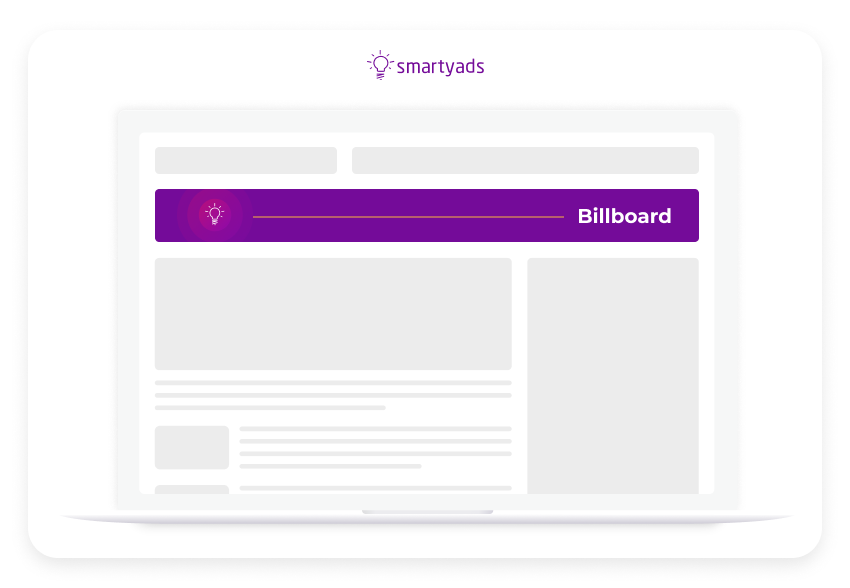
Filmstrip. A half-page ad format that occupies the whole left or right side of the page’s ad space.
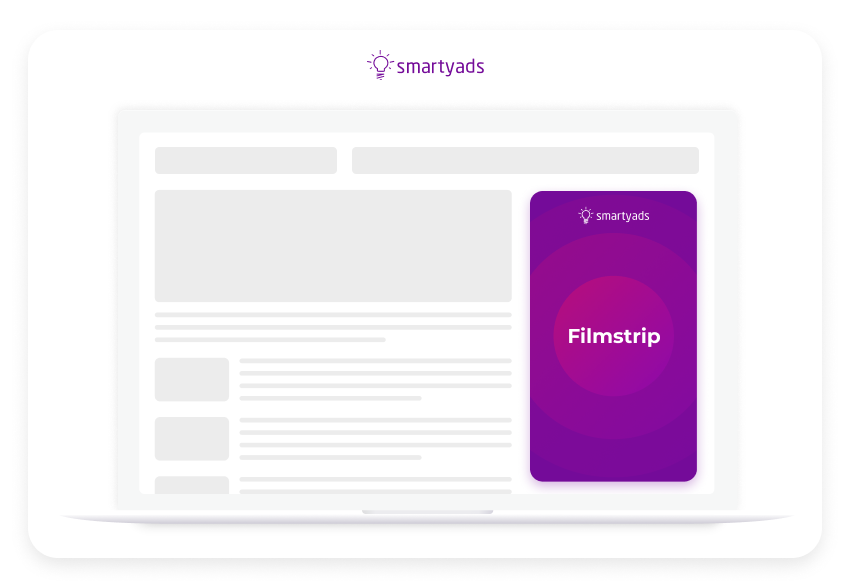
Portrait. Similar to filmstrip, but not so long and often contains plug & play content.
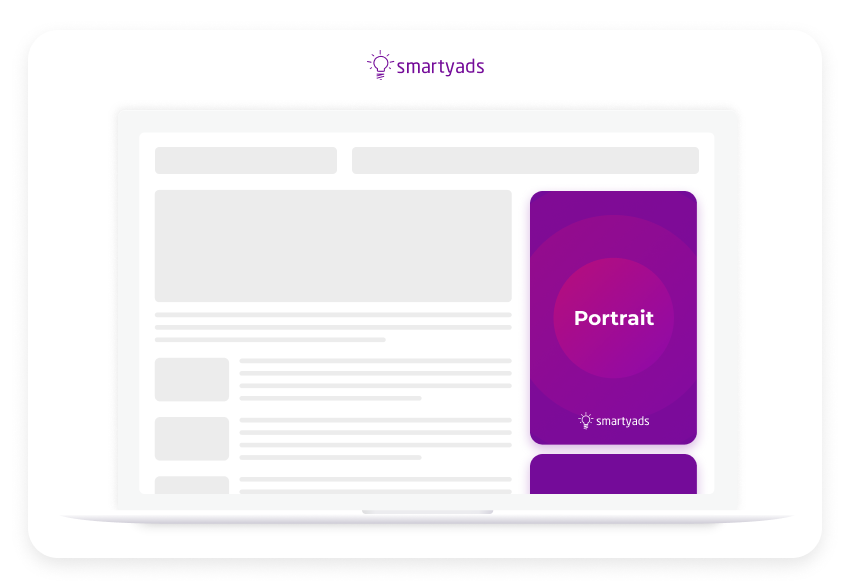
Pushdown. A large leaderboard that “pushes” the rest of the page’s content down while being triggered. An alternative to this is Billboard which is designed primarily for clients who have the capacity to take on premium inventory.
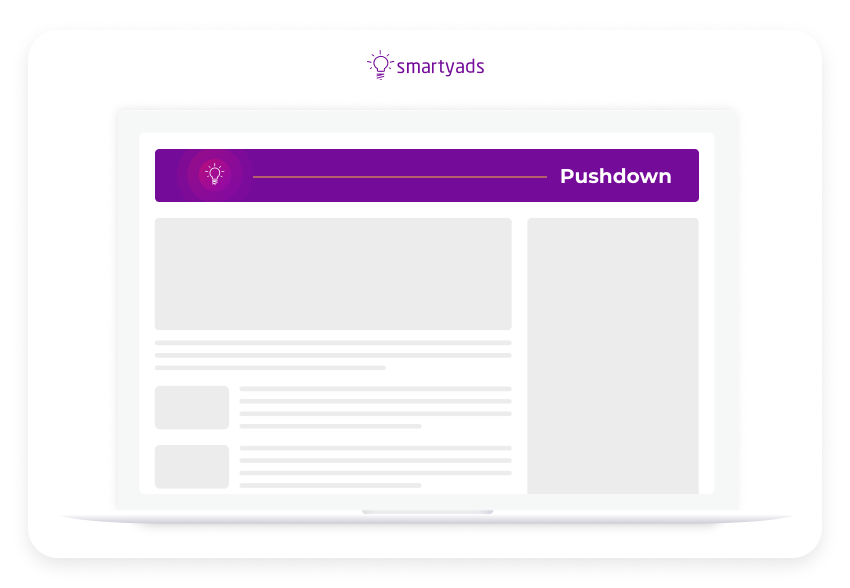
Sidekick. An interactive right-side banner that pushes on-page content on the left.
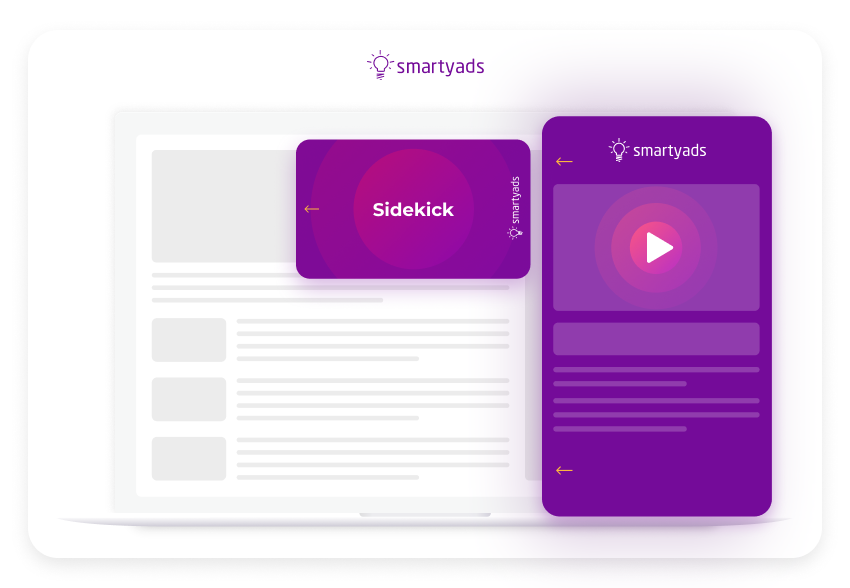
Slider. An overlay unit is located at the bottom of the page. It fills the page with sponsored content 100% if the user interacts with a banner.
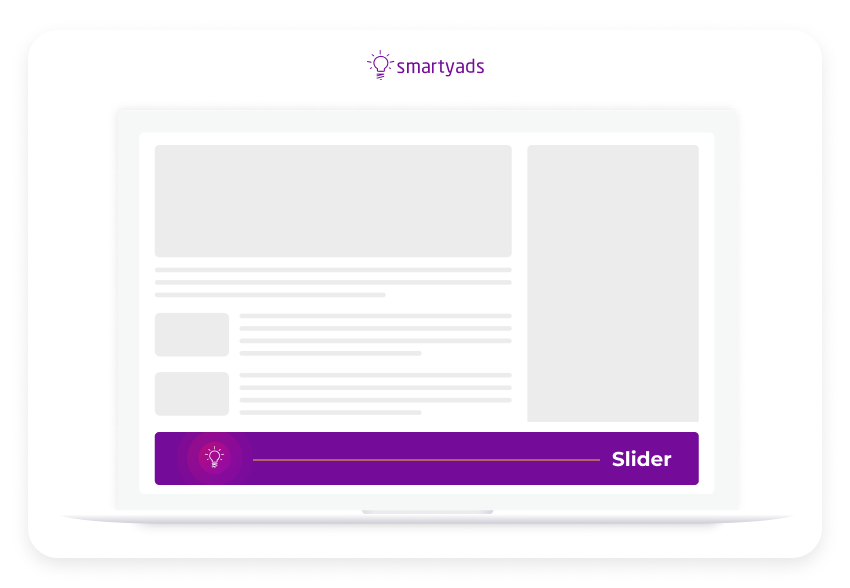
According to IAB, Rising Stars produce 63% better engagement and 5x longer gaze duration when compared to other display formats.
4 golden rules for preparing your display creative
Irrespective of whether you are using manual or programmatic display advertising, how you go about your display creatives design and deployment can affect your advertising efforts and ad budget. As a top ad exchange with several years of experience in the advertising business, we suggest that you look at the following display campaign tips and improvement advice for programmatic ads.
Watch the language
The language of your display creative should match the language of the geos where you advertise (make sure to check the settings on your DSP or ad exchange). Plus, you need to make sure it aligns with a landing page where the ad leads to. No matter the level of ad customization technology programming (i.e. programmatic advertising) used by an ad network or advertiser, your ads will fail to convert as expected if you fail to use the proper language in your ad creatives.

Make it catchy
Display campaigns heavily rely on visuals but the users are already used to flashy and attractive creatives. The beautiful picture and media in it will certainly attract more attention to your ad but the content is what will interest them to actually click on it. Thus, relying solely on high-level programmatic advertising targeting used by your ad network is not enough.
Time-sensitive digital display ads convert much better because users are afraid to miss the chance to buy something discounted or something that is still in stock but limited. Apply it for your programmatic display units.

Don’t overload it with text
While it seems like the basic principle of designing ad units, many get lost in the process and end up clattering the banner with excessive details. Sure, details are very important but the goal of the banner ad is to spark interest and make the users click on it. Make a draft of the text on your ad and make sure you leave only the most important words. The best practice will be shortening the message to 10-20 words. For complex services and products, it is better to opt for videos and native formats.
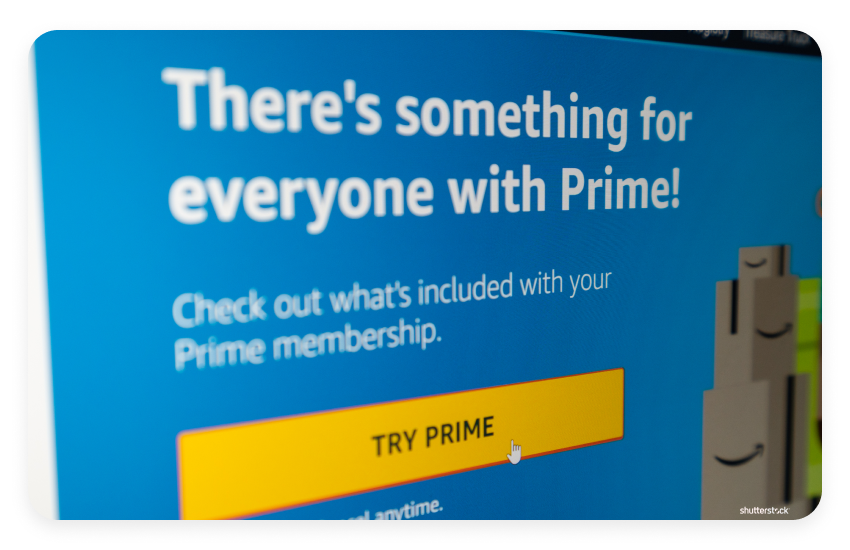
Use one call to action
It is very confusing when you see a compelling offer and the ad doesn’t tell you what to do next. One ad unit should include one call to action just like your landing does. It should be clear for the users what action your offer asks them to perform. From the picture above you can see that the Amazon ad instructs the user: Check out what’s included in your membership and the “try prime” button alongside it, together it works as a CTA.

Create a descriptive landing
A landing page is typically created for a specific goal: to sell a product or service, collect the leads or news subscribers, or just to analyze the real time demand for a product.
A landing web page created for display campaigns is a best practice.
Create the landing before you create your display unit as the URL of your landing page will be featured in the ad campaign settings. Then the ad unit will redirect a “warmed up” audience to the landing.
6 main tips for creating cool landing for ads:
- Landing should have one CTA and should be focused only on one purpose.
- If the product is complex, describe how it works and how it delivers benefits to the users.
- Include testimonials, stats, and other elements that illustrate that your product is loved and actively used by customers.
- Test several variants of pages to determine which works best.
- Keep data input forms very short, don’t make the users sweat while filling them.
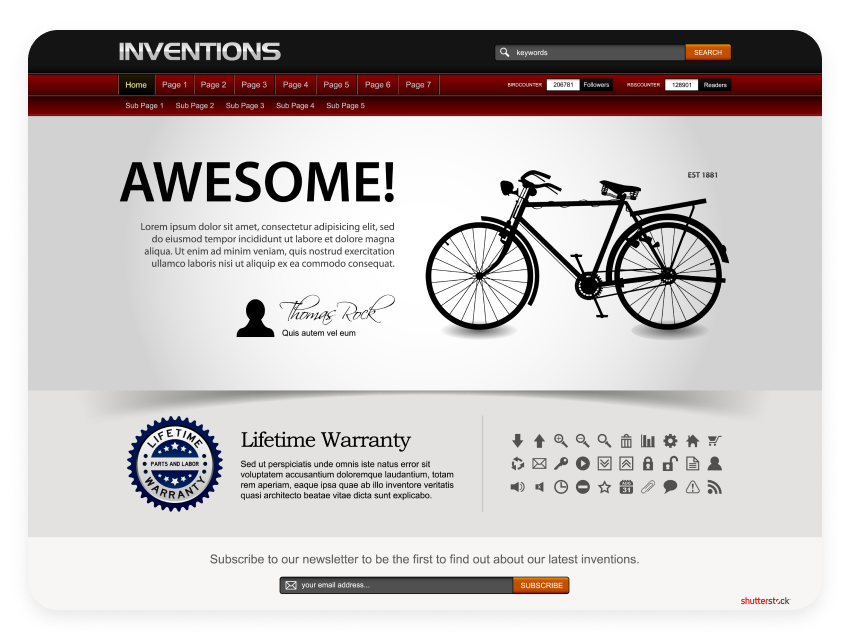
Challenges of display ads and how to tackle them
Display creatives are considered to be the most affordable and universal ones, however, such phenomena as banner blindness may prevent them from reaching their peak effectiveness. Banner blindness is the ability of the human eye to avoid ads during site browsing, it happens both consciously or subconsciously. You must consider this, especially for the programmatic buying of ads.
The F-pattern: what's important to remember?
Typically after opening a page, people skim over the top lines of the text, then go down and look at the text horizontally again. Then the user glances down. This content assessing pattern resembles the English letter F. Some share (the majority) of the users carefully inspect the left side of the web page. Only one in five users proceed and go down below the scroll line of the page. When it comes to programmatic buying and display unit location you should keep this information in mind.

How to serve a display campaign?
Display unit should be based on a strong digital advertising strategy (preferably that involves real time programmatic ad buying).
Setting up a display campaign might seem like an easy task. This is because there are lots of ad platforms that offer 100% workflow automation and real time optimization.
Indeed, finding a suitable ad inventory for ad placement is way easier.
Programmatic platforms (a DSP, ad exchange) offer not only automation but also audience based highly-personalized ad delivery. Thanks to programmatic advertising technologies, we have greatly simplified and revolutionized digital marketing and contemporary online advertising.
Take for instance, programmatic advertising algorithms on DSP or ad exchange, they match cookies with campaign criteria and place the ads themselves without human interaction. However, the competition for user attention is very tough and the creative itself, messaging should never be underestimated during the ad buying.
For display marketing campaigns (ad buying based on CPM - cost per mile), advertisers pay for 1000 impressions served by publishers on websites/in apps. This model is more affordable than cost per click (since cost per impression is cheaper) but the ad campaign performance (including the number of clicks per each served impression) will depend on how engaging the ad is.
Where to serve display creatives?
Programmatic advertising via Real Time Bidding RTB. In this case, you register at demand side platform DSP and fill in your ad budget - that is pay per 1000 impressions at once (for CPM campaigns). The ad network will use programmatic advertising to determine where your digital advertising units should be placed. Read our previous article programmatic vs RTB.
Each of these impressions you pay for will be served on different media because the essence of programmatic advertising is to find the most relevant audience for your ads (who can be scattered across different sites, apps, and channels).
This way, the system will sift through the vast amount of vacant ad placements to fill the impression for the user that best suits your selected targeting criteria (age, OS, device type, geo, etc.).
Most ad networks and ad exchanges have programmatic advertising algorithms (real time bidding) built into them to cross-display the same display adverts on different devices and channels.
This is why programmatic advertising using real time bidding RTB beats manual ad placement hands down. Programmatic advertising allows advertisers to reap maximum returns on their investments without sacrificing user experience as typical DSP pr ad exchange has also impression frequency limitations.
In digital marketing, private auctions PMP (run on ad exchanges) represent the other variation of auctioned deals. As a rule here publishers offer limited or exclusive advertising space. Participating in PMP publishers can guarantee a more predictable environment as they set a minimum price.
Programmatically via direct deals. Programmatic direct advertising offers the same perks of campaign automation and targeting just like programmatic RTB. Still, direct deals are made without participation in real time bidding RTB auctions. This means that the advertiser will directly buy ad inventory from the publisher, not in real time auctions.
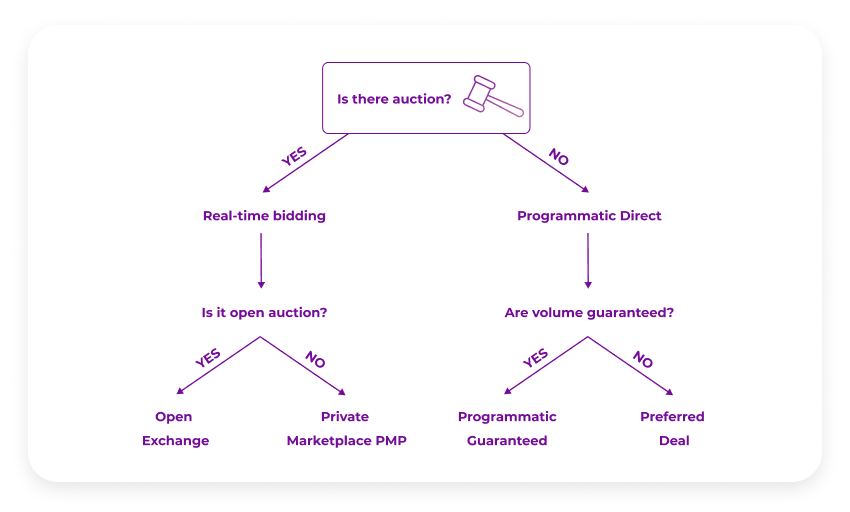
With this publisher may offer to the advertiser a guaranteed number of impressions. The main benefits of direct deals are that they make media trading more predictable for both advertisers and publishers. If, for instance, an advertiser has a well-established relationship with a renowned publisher they can make a deal for serving a fixed number of impressions. Publishers, meanwhile, ensure that exclusive inventory is sold to the right partners.
So where’s programmatic advertising technology used here then? Imagine the case when an advertiser sets the direct deal with a publisher for serving 10 000 impressions on the popular sports news channel.
But here’s the trick - the channel is international and visitors come from all around the world while the advertiser is intended to offer sportswear only to the local customers. In this case, the advertiser goes to demand side platform DSP and adjusts the right geo to show ads in real time to those visitors who are local.
Programmatic advertising (DSP, ad exchange) provides a much easier way to accomplish this. That is, the advertisement is automatically programmed using suitable algorithms to laser-target the ad to fit the specific audience and advertiser's need. Thus, when you look at it, digital marketing gets easier and better with programmatic advertising.
Programmatic advertising allows advertisers on small and large budgets to reap maximum ROI with almost no discomfort to the target audience.
Programmatic + digital display advertising = win-win?
Programmatic advertising is the automated purchase and sale of online advertising enabled by real time bidding. Programmatic advertising which is a fast-evolving digital marketing option is gradually taking over the display advertising market.
The long-term process of negotiation and manual trading, aka direct media buying and selling, requires maximum human effort without a guarantee of the highest cost-efficiency.
Programmatic advertising is just the opposite, as it is totally automated. When direct media buying and selling may take days or weeks, programmatic real time bidding solutions handle their tasks within milliseconds.
The key players in programmatic marketing and programmatic media buying processes ensure that effective media buying and selling for all parties are Demand-Side Platforms (DSPs) and Supply Side Platform (SSPs).
Programmatic advertising spend will rise to $96.59 billion in the U.S
According to top digital marketing research from eMarketer, programmatic ads, namely programmatic digital display spend, will reach $96.59 billion by the end of 2022 (only in the US).
Despite the COVID-19 implications, advertisers didn’t stop investing in ads, they simply redistributed their budgets towards those channels where the traffic grew (so spending on programmatic buying increased). Programmatic buying is expected to keep growing in 2022-2024.
With empty streets, digital marketing with out-of-home billboards lost its relevance while online broadcasting and online gaming only boosted.
Much of the successes in advertising during and even after the COVID-19 days would not have been achieved using manual advertising techniques. The use of programmatic advertising helped to sustain lead generation and increase conversion rate.
To date, programmatic ads still plays a crucial role in boosting ROI and ad spend across the world. In recent times, many people have resorted to streaming videos on all available divides - mobile, connected TV, in particular, and smart advertisers are leveraging this by investing more budgets into programmatic display advertising campaigns.
According to Statista reports, in 2021 ad spend on videos was bound to rise above $22.18 billion. In general, by the end of 2022 around 82% of Internet traffic will come from video watching and ad spend will keep increasing.
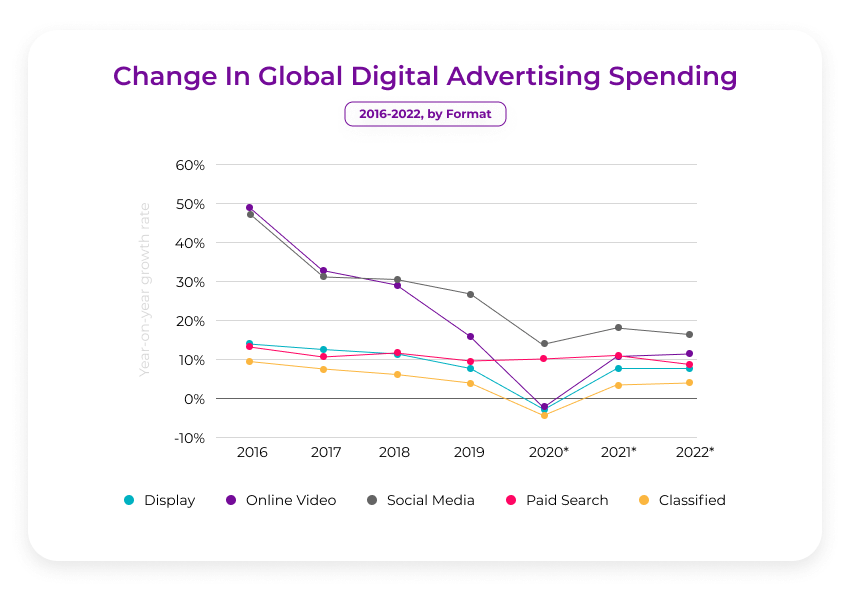
Display campaigns in programmatic advertising: DSP (demand side) and SSP (supply side) as key platforms
How is display ad serving organized in programmatic marketing?
Programmatic advertising has a complex and multilayered ecosystem where each platform performs a certain function indispensable to the ad serving. DSP and SSP platforms are the most important elements for this process.
In digital marketing, a Demand-Side Platform (DSP) is a programmatic advertising tool for advertisers. It works almost like an ad exchange. It features the self-serve dashboard in which advertisers adjust display programmatic ad campaign settings.
Then, a DSP checks advertising space (ad placements) available at ad exchanges and matches suitable inventory slots to given advertising display units. The system places an optimal bid based on a budget specified by the advertiser. The auctions normally take place in the ad exchanges.
If the bid wins, the ad will be served in real time to the target user. That’s how programmatic ads work on DSP.
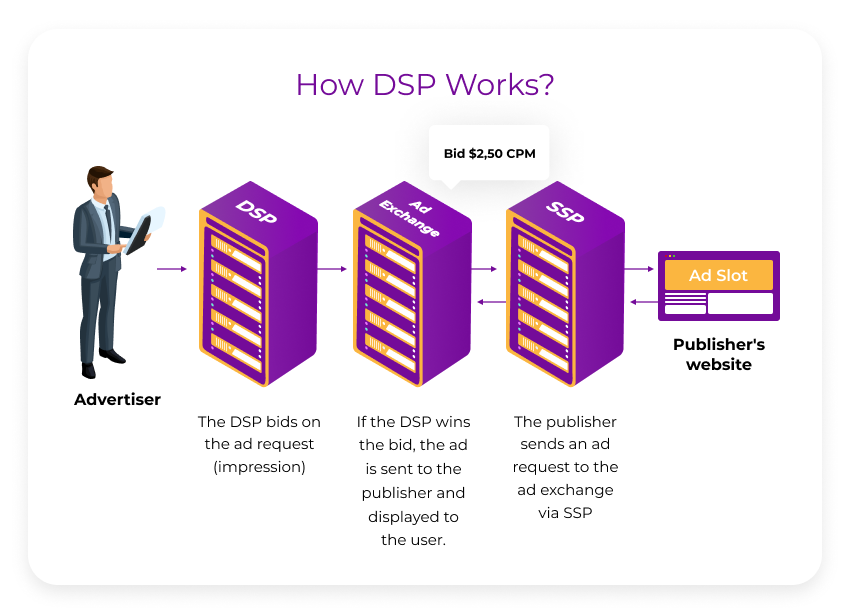
Learn more about how a demand side platform DSP works here.
A Supply-Side Platform (SSP) is a programmatic platform for publishers and app developers, in which they manage their available inventory (ad space) and sell it.
Supply Side Platforms SSP sends information about the available inventory, website audience, and relevant third party data to DSPs and ad exchanges.
When several DSPs identify the publisher’s inventory as a suitable one, a Supply Side Platforms SSP evaluates the bids sent by those DSPs and choose the highest one among them.
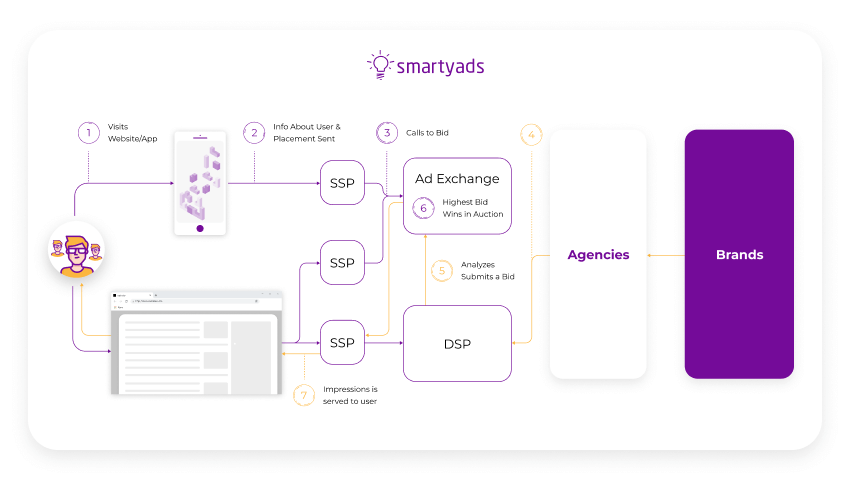
Learn more about how Supply side SSP works here.
Publishers sell their inventory at the highest possible CPM without losing a penny (Supply Side Platforms SSPs can also receive all bids simultaneously during a real time bidding auction or header bidding).
Aside from display advertisements, full-stack advertising programmatic services like SmartyAds work with the rest of digital ad formats including video, native, mobile, and connected TV online advertising programmatic channels.
Having good knowledge of how Demand Side Platform (DSPs) and Supply Side Platforms (SSPs) work can help you to make the best decision towards your advertisement strategy.
How to retarget with display units
Digital marketing without retargeting can be a big waste of ad budget if there is no proper retargeting plan in place. Hence, a great way to launch display campaigns that would bring in recurrent ROI is by retargeting those users who didn’t convert in the first place.
For instance, if during the first ad campaign you addressed your audience on desktop, during the retargeting campaign you can reach them on the mobile or connected TV. Programmatic becomes more interesting and rewarding for advertisers, ad networks, and ad exchanges.
The built-in programmatic advertising technologies of ad networks and ad exchanges would learn from previous remarketing lists and automatically serve your ads to the audience based on their past behaviors.
The best practices of retargeting:
- Define your best products or services. Run the audit of your products and services to find the best-sellers that generate the greatest amount of revenues. As soon as you nail it, select them for your remarketing advertising campaigns.
- Embrace new channels of programmatic advertising. Before you set up a retargeting campaign find out alternative channels that your audiences visit most often and launch a campaign on them.
- Offer a discount. Think through your offer to engage the audience better - choose engaging formats or offer a discount.
- Experiment with formats. Test various ad formats to find those that will work optimally. Change the location of the CTA, the picture, or the wording (only one element at a time), and then see which combination works best.
- Adjust creatives to the channel. Launching a campaign across new channels, let’s say mobile, don’t forget to adapt the dimensions of your creatives accordingly to enable a highly converting advertising programmatic experience.
- Adjust the advertising frequency so that you serve the right amount of ads per user during a particular period.
You can create a remarketing list for your campaigns in Google Analytics or use any other third-party data tool designed for it. Likewise, you can just re-use the same segment of users you were targeting in your previous campaigns on DSP.
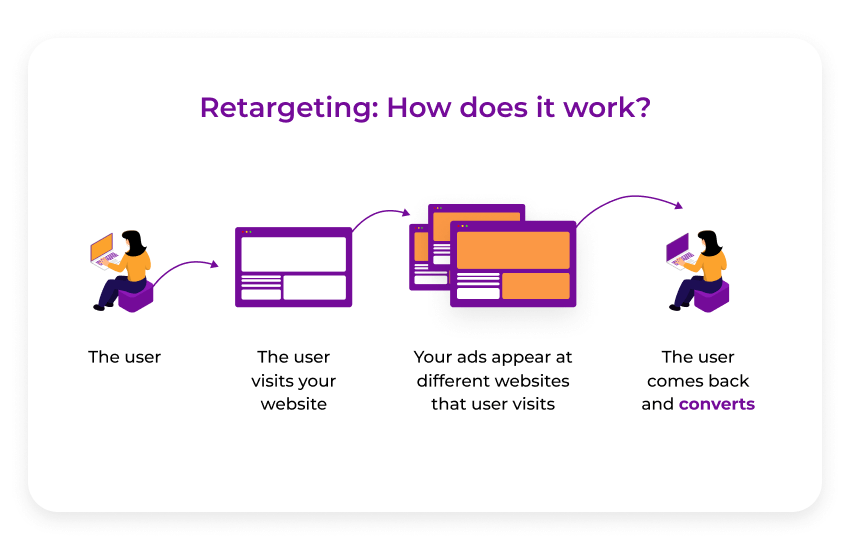
When you create a retargeting campaign on a DSP, it means that an ad platform will allow you to deliver the ads in real time to audiences that have previously been targeted by your campaign or who have visited your website.
In order to create a retargeting programmatic ad campaign on SmartyAds DSP you need to:
Select the campaign type in your DSP dashboard: banner, native, or video.
Fill in the basic campaign settings and proceed to the targeting section.
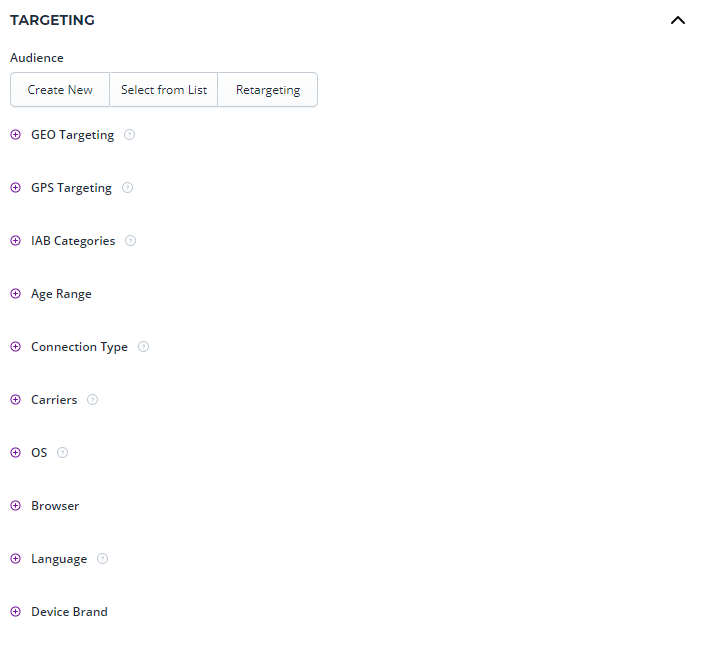
If you already have audiences from previous campaigns you should select the button that says “retargeting” and then select the audience from the list.
Now select the targeting feature according to which you want your campaign to be served. As you can see in the picture, you can select from diverse targeting choices starting from demographic ones (age range), and end with technical characteristics (browser, device type, connection, OS, etc).
The IAB categories option helps you to define which IAB category your campaign falls within. It helps to better match with those publishers who specify particular IAB campaigns as desirable.
Later when you proceed to the filter lists you can also decide where you don’t want your ads to appear. There are whitelists that define desirable sites for ad placement (ads will be served only on those sites) and blacklists that exclude certain domains or apps from targeting.
Just choose the 'New' filter, name it and write a list of values. Or, click 'Select from List' and choose an existing filter. Then select whether it should work as a blacklist or a whitelist.
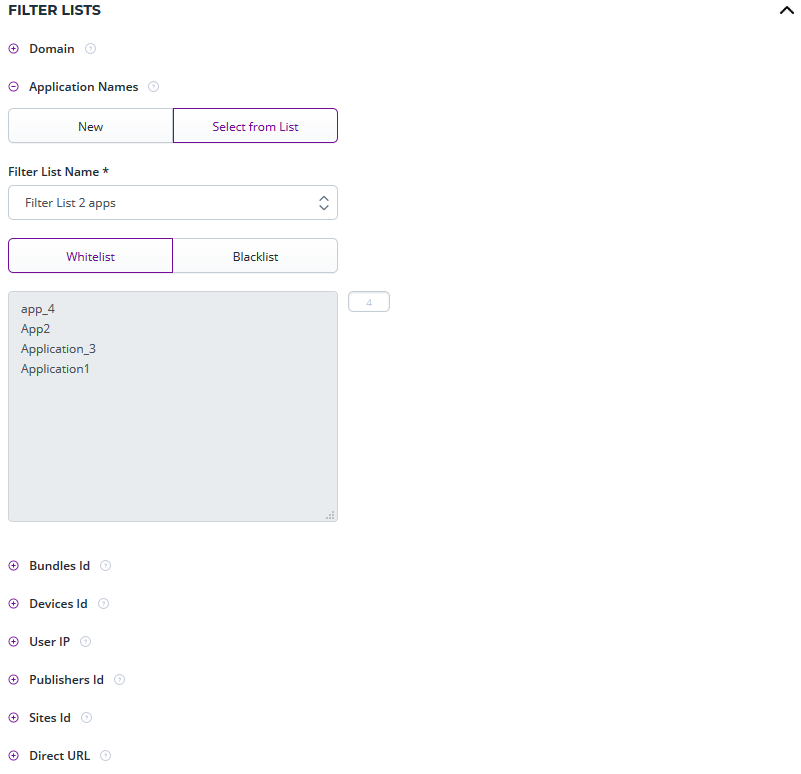
While retargeting, you can always modify your audience targeting metrics to measure the effectiveness of your campaign.
Instead of conclusion
To elucidate the subject of what is display units, we should look back ten years. Previously, display ads were limited to static banners; however, they have evolved to include rich media creatives that render well on mobile devices, desktop computers, and connected TV.
It is now up to advertisers to get started with programmatic ad technologies and fine-tune their targeting to reach the most relevant customers. On SmartyAds DSP you can configure lots of targeting options that will help to deliver your ads to the right audiences using real time bidding. Get your display units placed in the right publishing ad space at the right time and across the channels, they prefer most. Buy the right ad, buy programmatic impressions on best tech platform.
Sign in on SmartyAds DSP to get started and drive higher ROI with impressive programmatic display campaigns.

